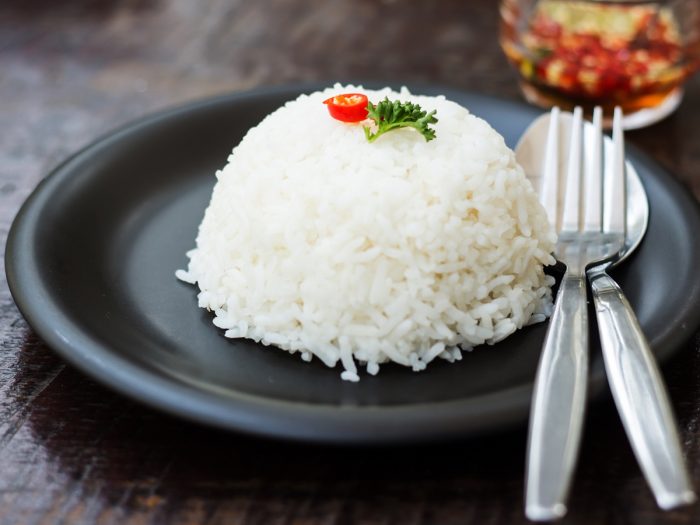Going on a Rice Diet is considered by some people to be a boring, fad diet with limited long-lasting results, but there is some merit to the diet and should be considered if you want to lose weight.
What is a Rice Diet?
The rice diet was first established as an extreme treatment protocol for malignant hypertension but went out of favor when anti-hypertensive drugs became popularized. Now, less stringent versions of rice diets are quite common but are largely based on the same theory. If you can reduce the metabolic load on your kidneys, by reducing protein, sugar, sodium, fat, and calories, then it would be possible to cleanse the body, reduce blood pressure, and lose weight. While there is a wide variety of approaches to a rice diet, most include significant dietary restrictions but is not limited to solely eating rice. [1]
How Does a Rice Diet Work?
A rice diet works because you are significantly reducing sodium, calories, fat, and protein from your diet. Most rice diets have a few different phases, and the first is an extreme calorie reduction, down to about 1,000-1,200 calories per day. Starch and non-fat dairy are the only elements of the diet during phase one, which lasts for about 1 week. Phase 2 permits the consumption of lean protein sources one day per week, in addition to the allowed foods from Phase 1. Phase 2 will last until you have achieved your weight loss or health goal. Phase 3, in theory, should last for the rest of your life, with your dietary choices being informed by the rice diet, although a bit more flexibility is allowed in terms of protein consumption per week. [2]

A rice diet works as you’re lowering sodium, calories, fat, & protein from your diet. Photo Credit: Shutterstock
Rice Diet Sample Menu
If you were to go on a rice diet, a sample menu for one day in Phase 1 might look something like this:
Breakfast
1 cup of oatmeal with 1/2 mashed banana; 1 apple
Lunch
1/2 cup of cooked rice and 1/2 cup of cooked beans, 1/4 cup of raisins
Dinner
1/2 cup of non-fat milk and 1/2 cup of quinoa
In Phase 2, you would be able to add a fried egg or 1/2 of a salmon filet once per week, in addition to starch, fruit, and vegetable-heavy meals like those described above.
Rice Diet Benefits
Rice diet helps lower blood pressure, reduce cholesterol, optimize digestion, reduce toxicity, and aid in weight loss efforts, among others.
Blood Pressure
The reduction in strain on your kidneys and the elimination of most sodium and fat from your diet will do wonders for your blood pressure. By preventing hypertension, the rice diet can help lower your risk of heart attacks, strokes, atherosclerosis, and coronary heart diseases. [3]
Weight Loss
The primary benefit of this diet is weight loss. By cutting your calorie intake in half, you will quickly create a calorie deficit, which means you will start shedding pounds. When combined with regular exercise, this diet can also boost your metabolism and make you a fat-burning machine. [4]
Cholesterol
The high fiber content in many of these meals will help to lower cholesterol, as the fiber is able to reduce plaque deposition in the arteries and further protect heart health. [5]
Digestion
Fiber is also an essential component of digestive health. Fiber is able to stimulate peristaltic motion, improve nutrient uptake, and prevent symptoms of constipation and diarrhea.
